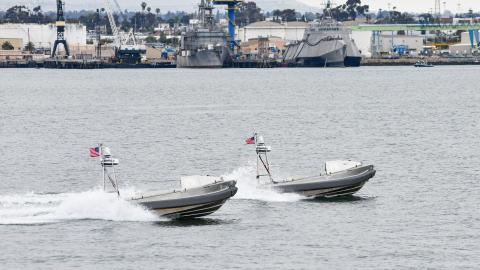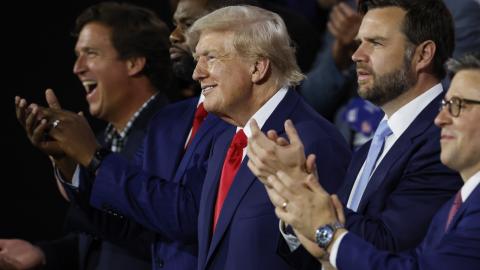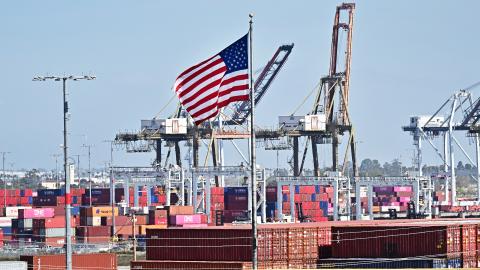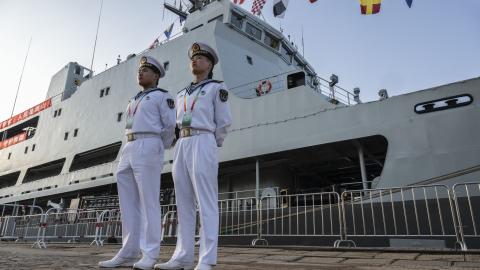Below Senior Fellow Can Kasapoğlu offers a military situation report about the war in Ukraine.
Executive Summary
• Manpower struggles: Russian troop concentrations in Ukraine reached a record high of 600,000 fighters, more than the standing militaries of most North Atlantic Treaty Organization (NATO) members.
• AWOL investigation: Ukraine investigated several allegations of combat inefficiency and absence without leave (AWOL) in its own units.
• Battlefield assessment: Chief of Staff of the Russian Armed Forces General Valery Gerasimov visited the front lines in the long-embattled city of Pokrovsk.
• Drone warfare update: Ukrainian drones hit a critical Russian aviation plant responsible for producing bomber aircraft.
1. Russia's Offensive Military Posture in Europe Is Rapidly Escalating
In a staggering revelation, Ukrainian President Volodymyr Zelenskyy announced that Russia had mobilized 600,000 troops in Ukraine.
By the end of last year, Kyiv's official military intelligence assessments had concluded that roughly 575,000 Russian troops were running combat operations on Ukrainian soil. By comparison, in early 2024 the Russian military fielded around 470,000 personnel in Ukraine. The size of Russia's troop concentrations in Europe threatens not only Ukraine, but also the North Atlantic Treaty Organization (NATO).
On paper, the transatlantic alliance can count on 3.5 million available troops and civilians. The NATO Force Model, a recently designed plan for fighting wars in Europe, aims to field an army of 500,000 within 180 days from the outset of hostilities. Though this model is a crucial part of NATO's strategy to respond to potential threats in Europe, Russia has already amassed a force greater than 500,000 troops—and greater than the standing armed forces of almost all European NATO member states.
This allows Russia to threaten Europe beyond Ukraine's borders if the Kremlin so chooses. General Christian Freuding, the head of the German Defense Ministry's Ukraine Situation Center, warned in a recent interview that the Russian military poses an escalating threat to the transatlantic alliance. With Belarus increasingly under Moscow's influence, the Kremlin may pursue more ambitious and expansionist policies in Europe if the West fails to hold the line in the defense of Ukraine.
2. The Ukrainian General Staff Investigates Potentially AWOL Servicemembers
As previous editions of this report have detailed, the 155th Mechanized Brigade of the Ukrainian Armed Forces continues to cause trouble for Kyiv. The Ukrainian government has initiated an investigation of the brigade for combat inefficiency, absent without leave (AWOL) violations, and desertion while training in France.
The Ukrainian State Bureau of Investigation recently declared that the commander of the 155th Mechanized did not effectively respond to violations among his subordinate personnel, including the AWOL charges. According to the bureau, the commander failed to perform his official duties and was eventually detained. Should a court martial find him guilty, he could serve up to 10 years in prison.
In a parallel effort, the Ukrainian General Staff has launched an investigation of the combat performance and discipline of the 156th Brigade. The deputy commander in chief of the Armed Forces of Ukraine, Oleh Apostol, personally conducted this inquiry. According to reports, the investigation revealed several shortcomings that the unit urgently needs to address.
For some time, force generation issues have hampered the Ukrainian military's warfighting ability. Two structural concerns have worsened this. First, Ukraine has tried to build new brigades from scratch rather than augmenting battle-hardened ones. Second, manpower issues have forced Kyiv to split battalions to run combat operations in different areas of a battlefield, a departure from the standard doctrinal order of battle for brigades. In a demanding war, such orders have jeopardized unit cohesion and discipline and have prevented the Ukrainian military from effectively utilizing its most experienced personnel. According to recent reports, President Zelenskyy personally ordered military leaders to resume the replenishment of veteran brigades rather than channeling resources to new and inexperienced ones.
3. Battlefield Assessment
Open-source intelligence has revealed no drastic shifts in battlefield geometry or territorial control in theater. The Russian push in Pokrovsk continues at a heightened operational tempo, but the Ukrainian military has secured tactical gains there. General Valery Gerasimov, the chief of the General Staff of the Russian Armed Forces, visited the Pokrovsk front line on January 21. The presence of a high-level official at the front reveals the importance the Kremlin has attached to the Pokrovsk campaign.
The Russian military also made incremental gains in continued offensive combat operations near Kurakhove, Toretsk, and Velyka Novosilka. The Kharkiv front was comparatively calm. Russian military activity continued in Vovchansk but there were few changes in the overall situation.
4. Drone Warfare Update
In addition to these land warfare operations, Russia continued to launch Iranian-designed Shahed loitering munitions at Ukrainian cities.
Ukraine also continued to launch long-range salvos at critical military targets and energy infrastructure deep inside Russia. Multiple Telegram accounts, including Russian channels, reported a January 20 drone attack on an aircraft factory in Kazan, the largest city and capital of the Russian Republic of Tatarstan. The Kazan aviation plant is a critical source of the Kremlin's airpower, as the facility produces Russia's Tupolev-baseline heavy bombers. Ukraine also targeted fuel storage facilities at the Engels-2 air base, the home of Russia's bomber aircraft.
Ukraine's long-range salvos have forced the Kremlin to spend time and money to fortify its air bases. Russia has recently started to build additional structures at many of these bases, including those in the occupied Crimean Peninsula, to protect its combat aircraft from Ukrainian drones.



















